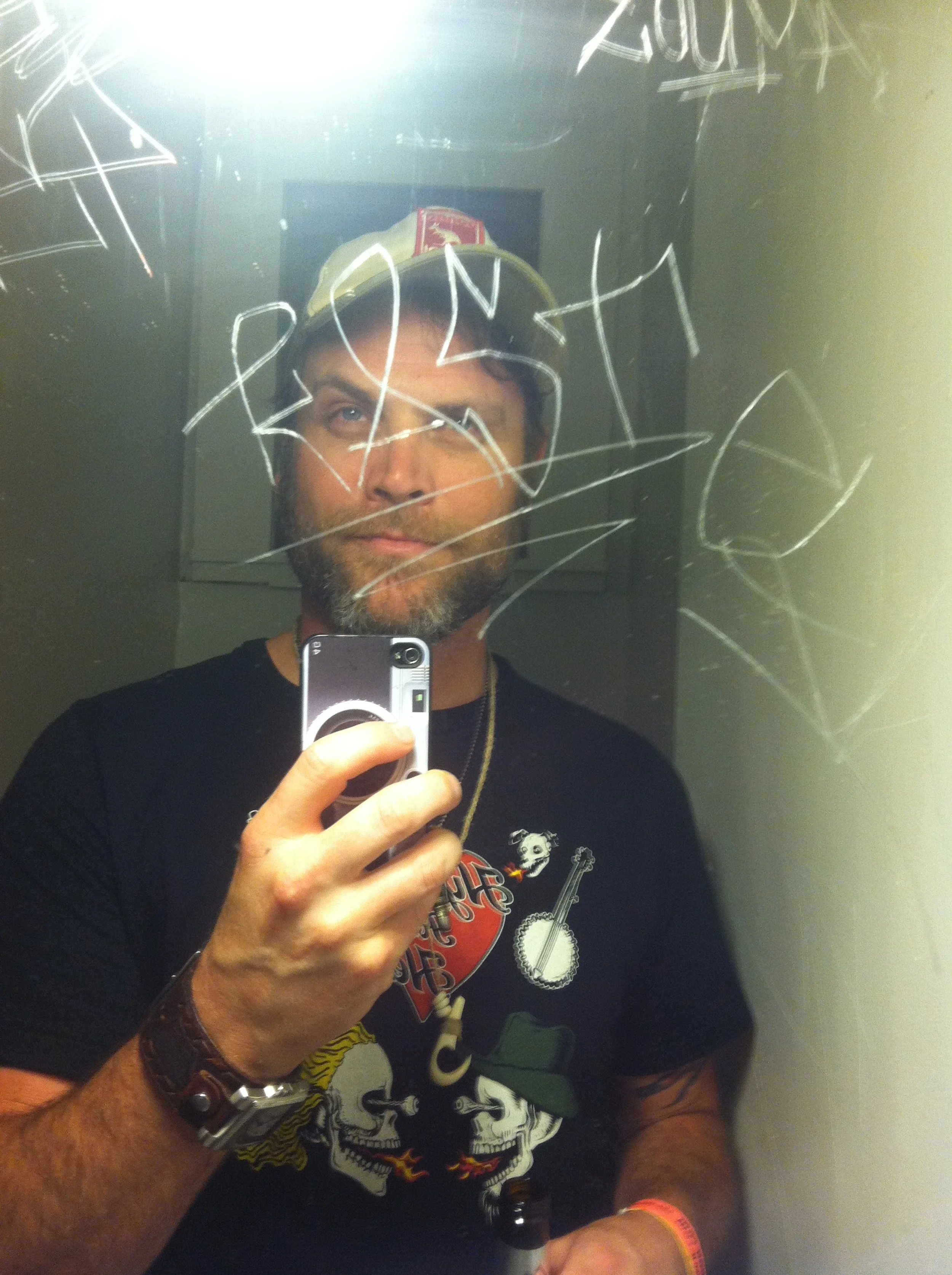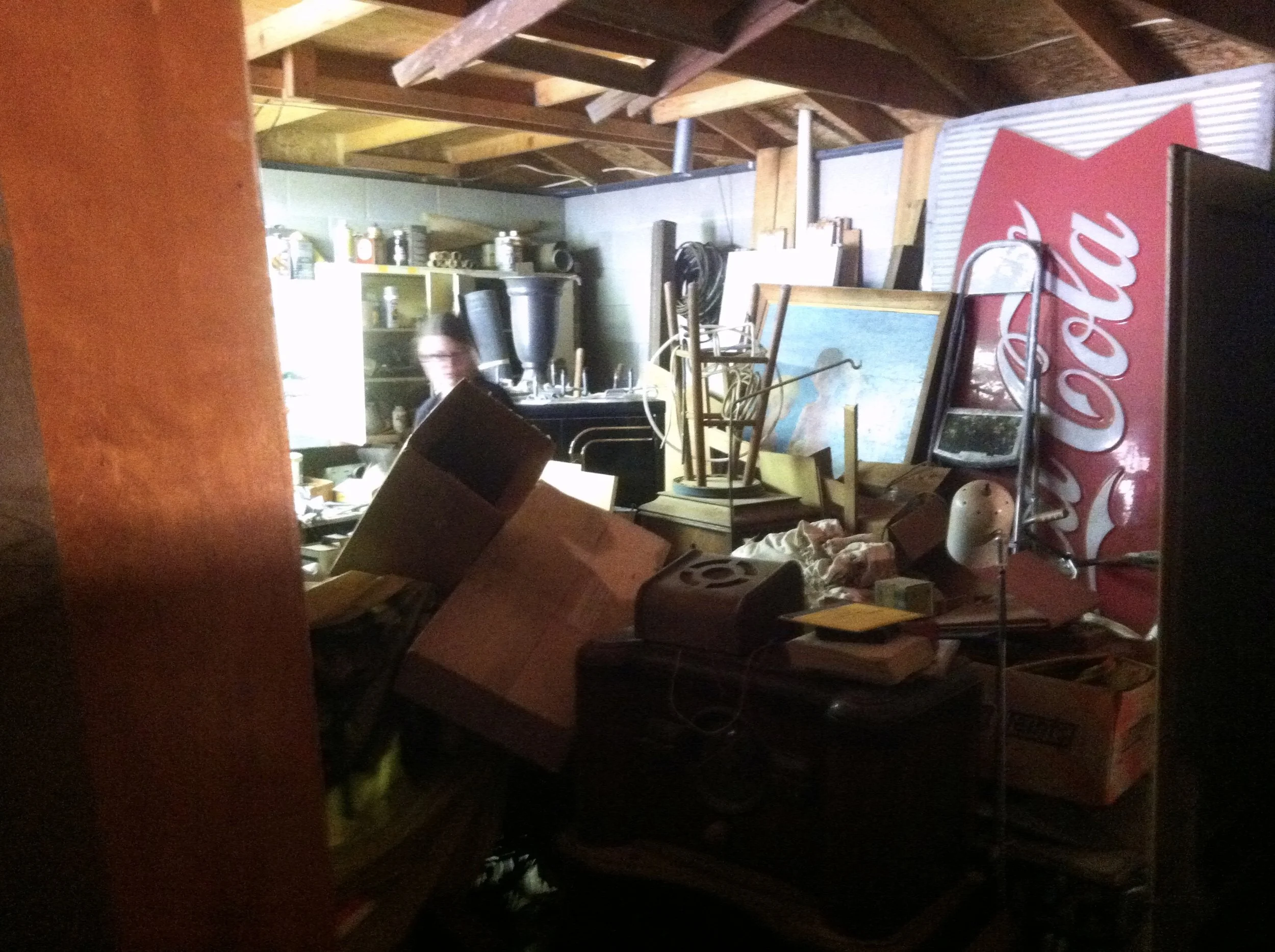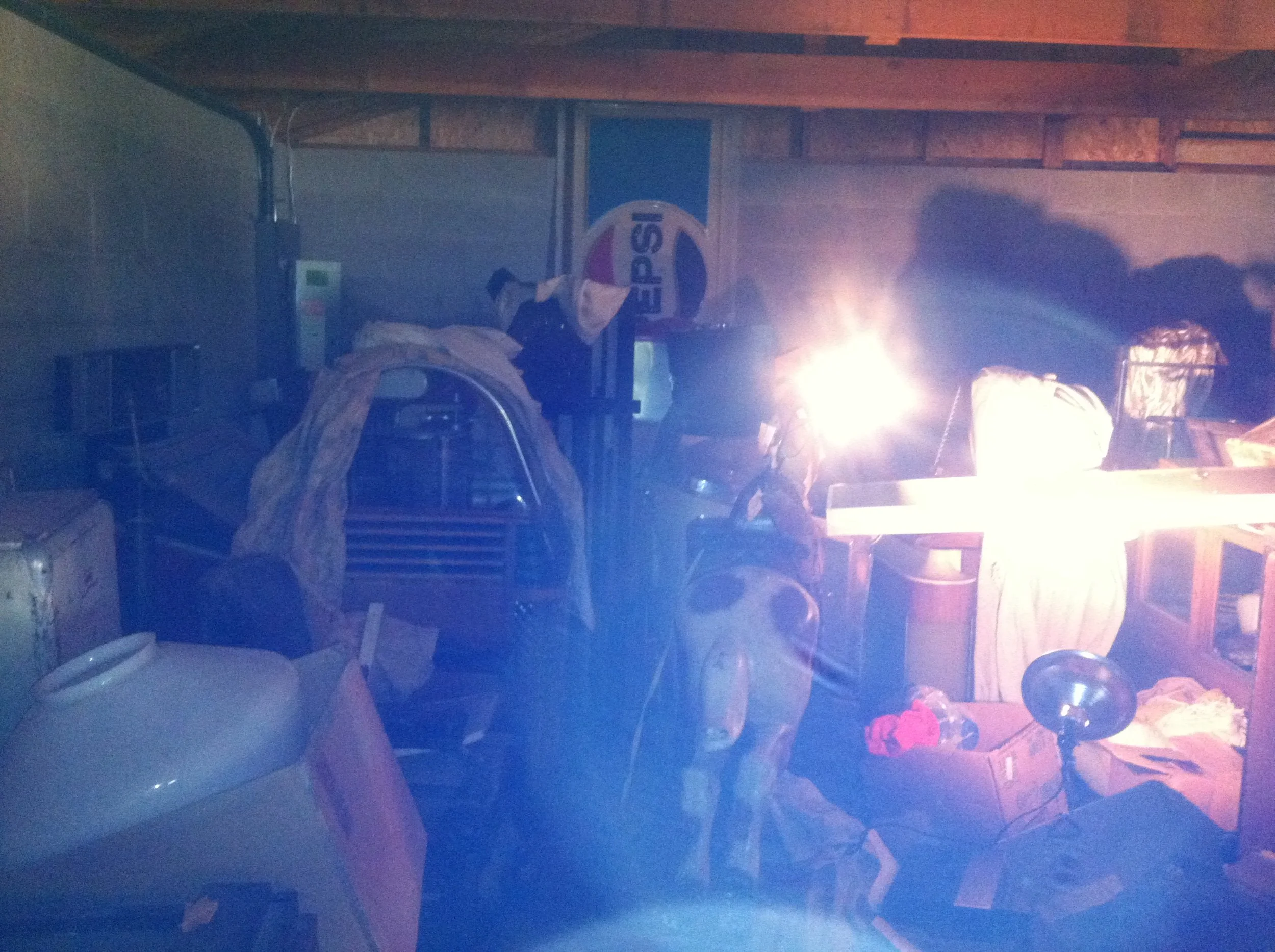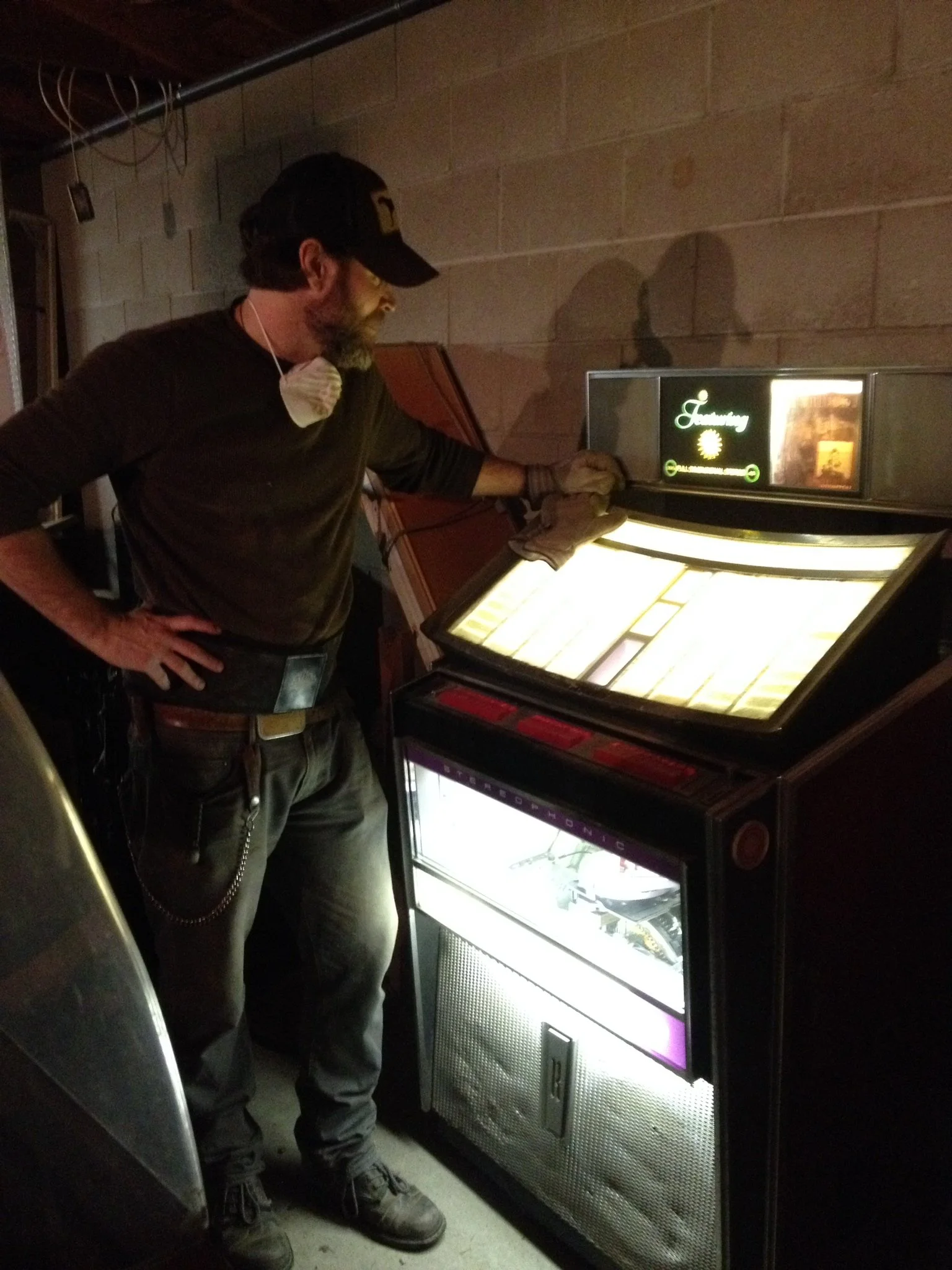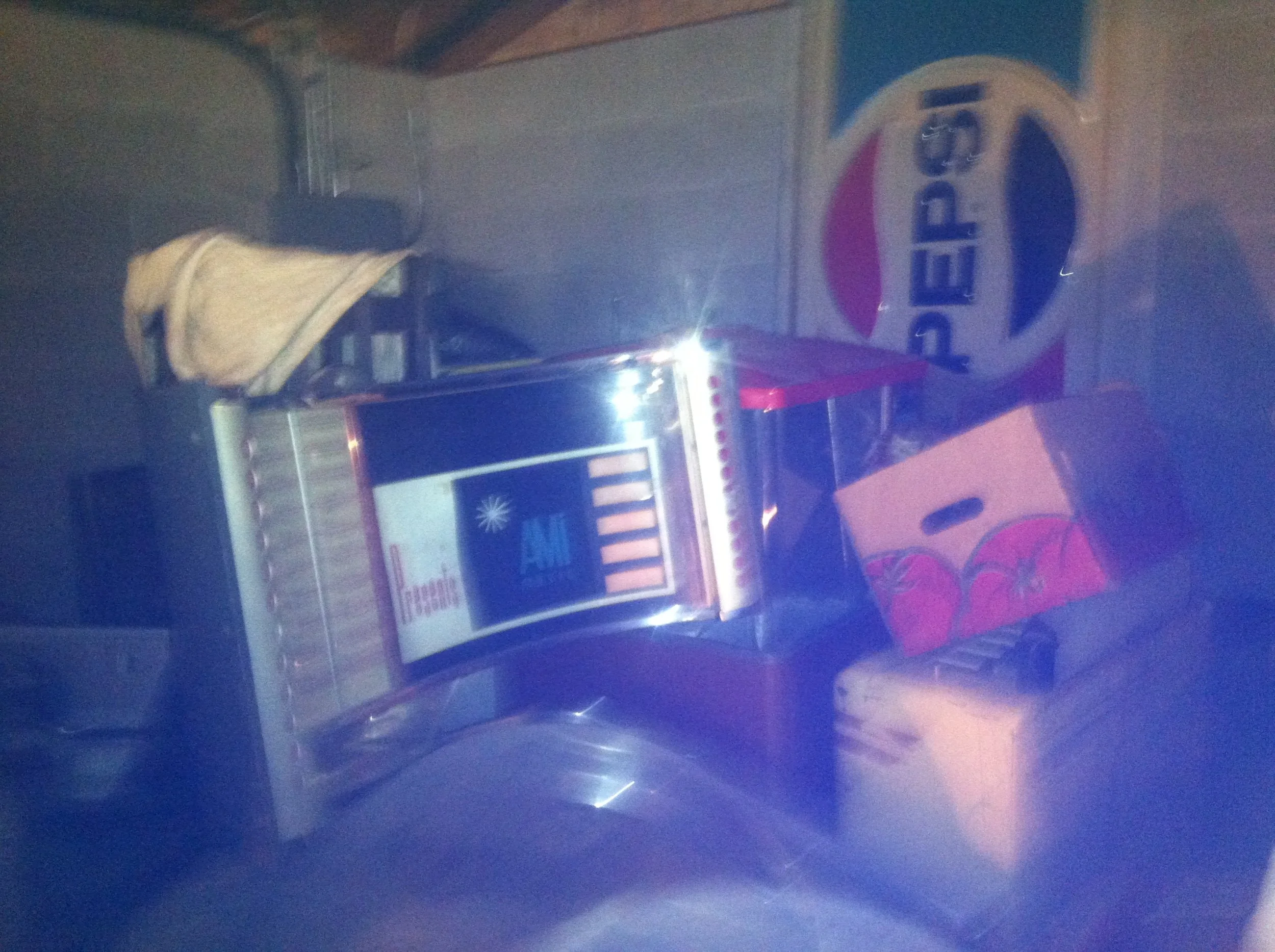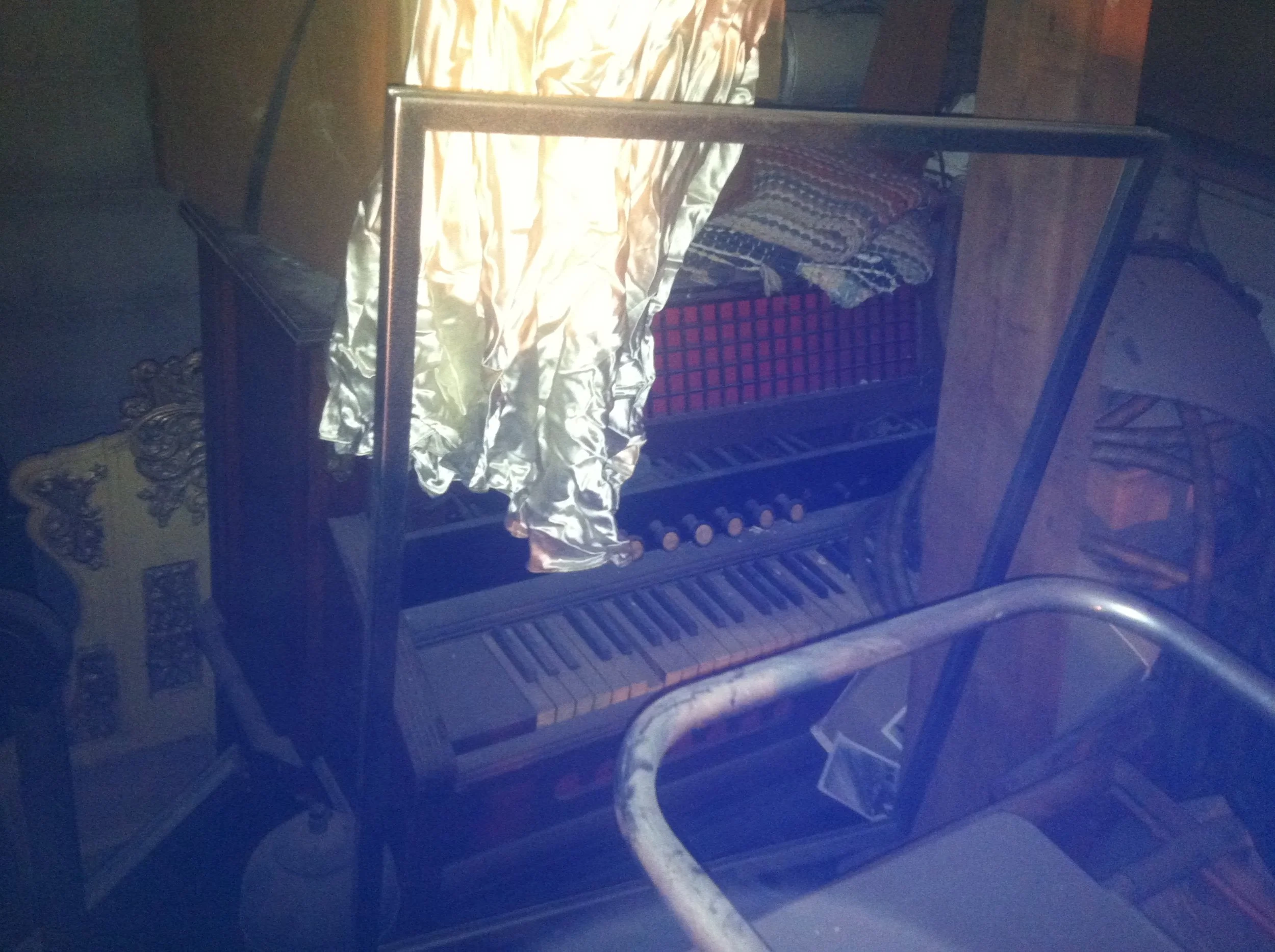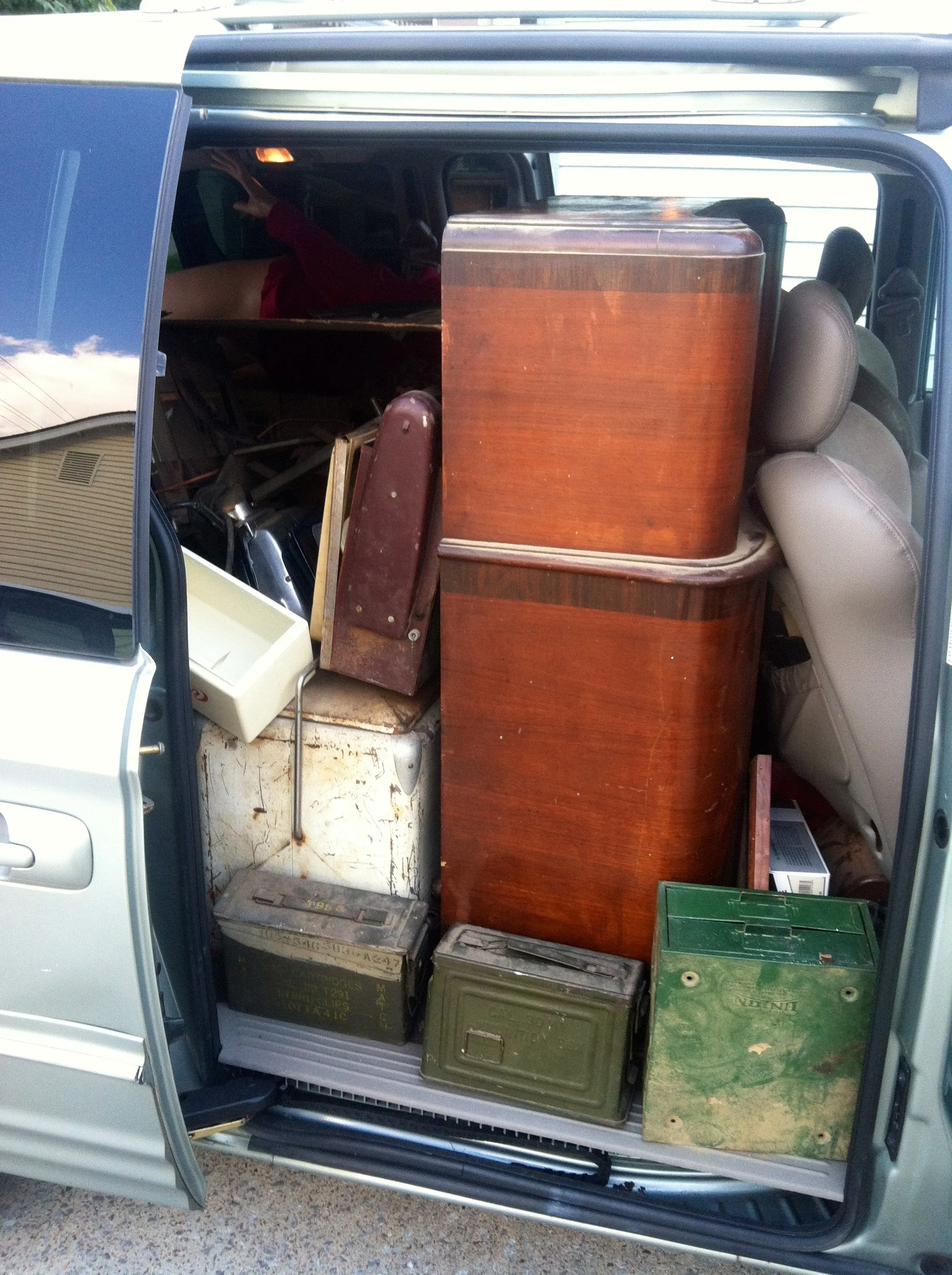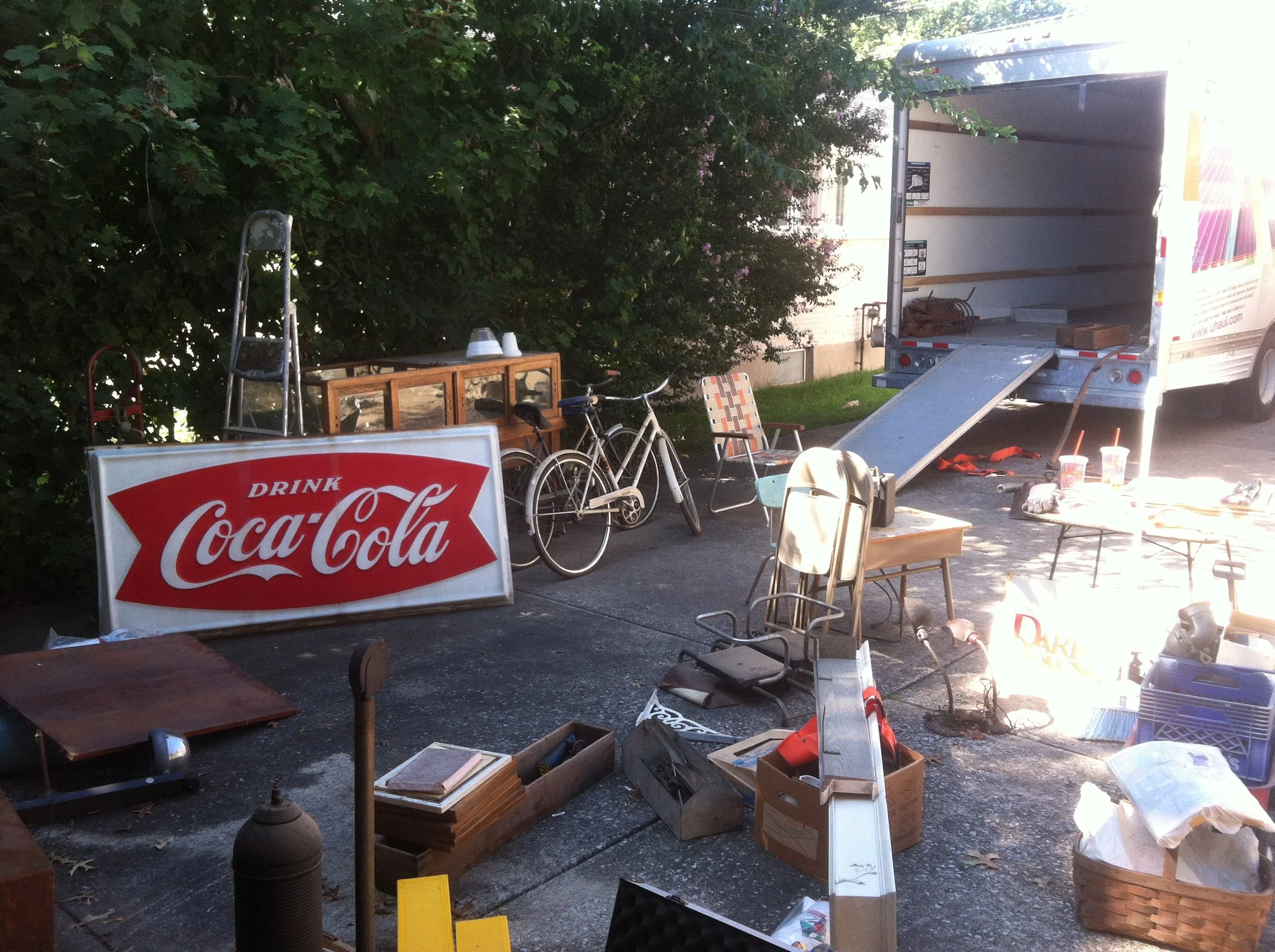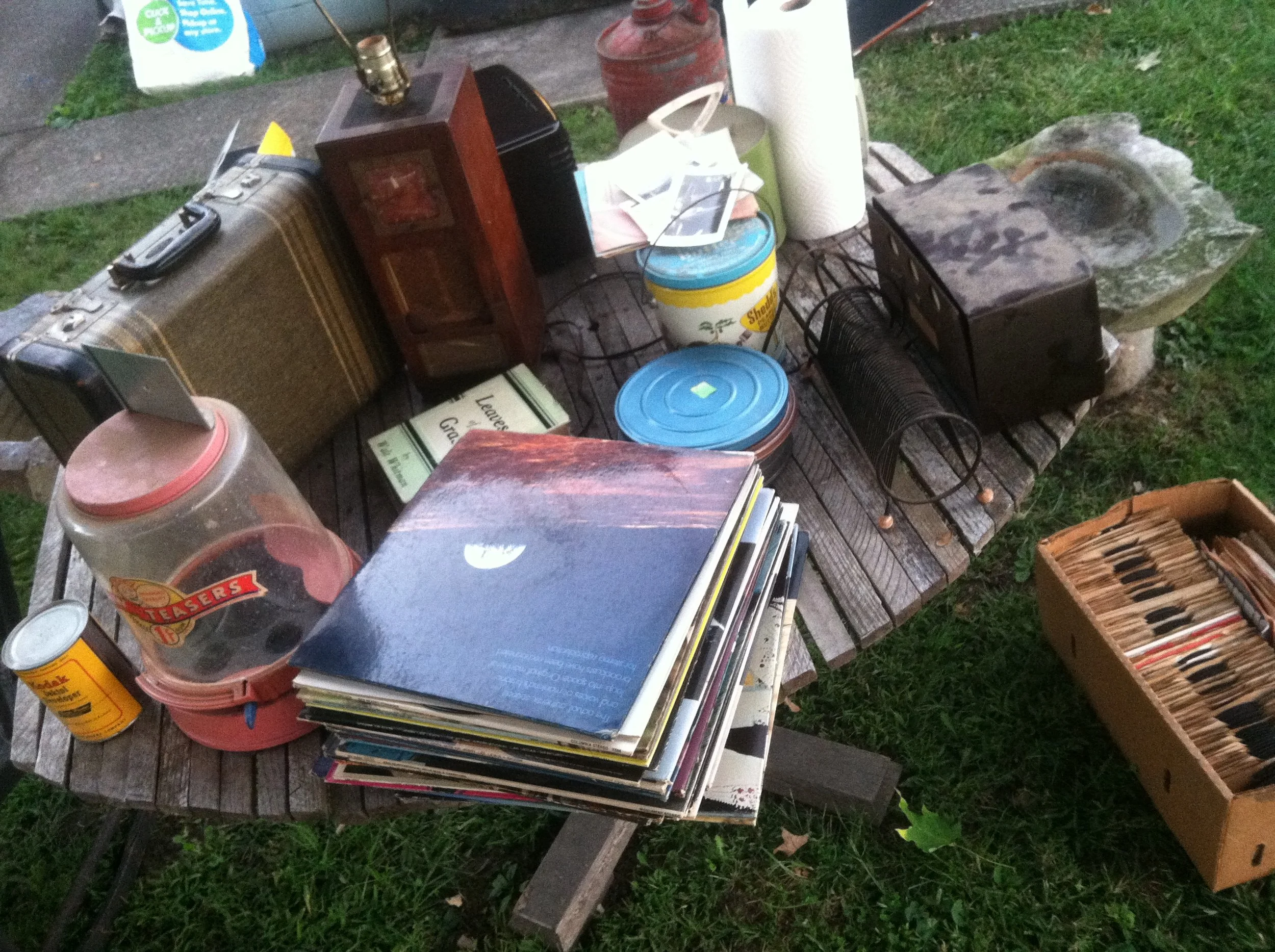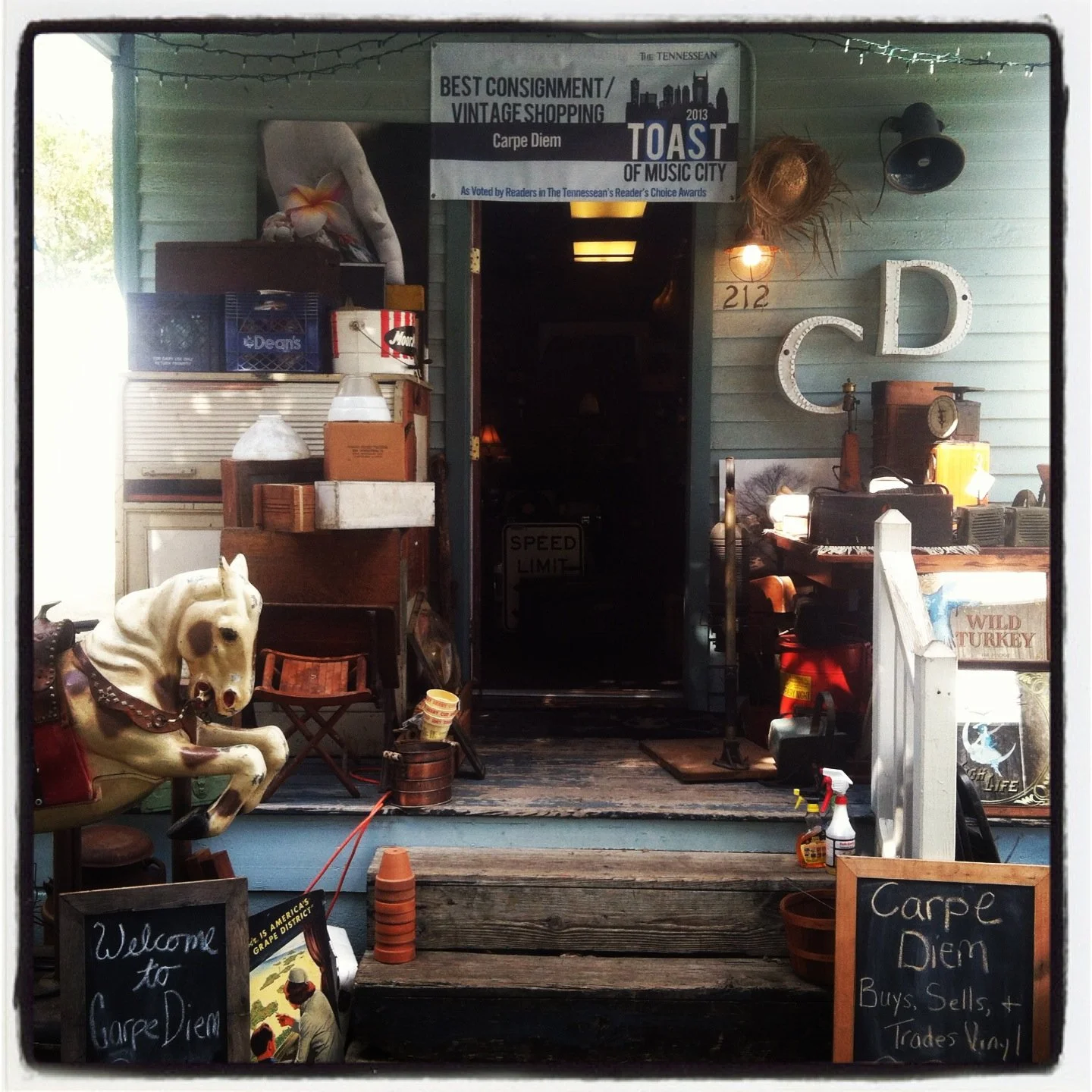The Accidental Record Mogul (or: How I Became a Full-Fledged Junk Dealer by 2013)
The Accidental Record Mogul (or: How I Became a Full-Fledged Junk Dealer by 2013)
I opened Carpe Diem in 2012. It was a tiny, teal-colored shotgun shack, wedged up right next to Kimbros, like a little bohemian parasite attached to Franklin’s most chaotic live music venue.
Did I have a plan? Absolutely not. But I had creative aspirations—a dangerous thing for someone like me.
Before I got my hands on the place, it belonged to Scarlett Scales, who packed it to the rafters with her shabby chic antiques. When she left, the space was practically bursting at the seams with distressed white furniture, pastel linens, and enough repurposed barn wood to build an actual barn. I took over the lease in the spring of 2012 and immediately did what I do best: winged it.
Since I was conveniently escaping to Maine for a bit, I entrusted my then-employee Sumita to handle the design. She hired some folks, put in the hours, and by the time I came back, the shop was transformed into whatever she thought I might like. A risky move on my part, but delegation is just another word for “someone else’s problem.”
Originally, I imagined Carpe Diem as a fine art portrait studio. I was photographing musicians, artists, and general Kimbros characters against the backdrop of Scarlett’s old textured wallpaper. This wallpaper, by the way, was some next-level design work—like if a Victorian brothel and a psychedelic fever dream had a baby. It made for the most incredible bohemian portraits.
But, as with all my creative projects, it wasn’t long before junk started creeping in.
First, a few antiques. Then some vintage instruments. Then records. Before I knew it, the shop had become a full-fledged junk labyrinth, with towering record bins so massive that getting from one side of the store to the other required either parkour skills or divine intervention.
And just when I thought things couldn’t get any more out of hand, a woman walked into the shop in the late spring of 2013.
She mentioned her father had recently passed away, and she’d be clearing out his estate over the summer. My picker instincts kicked in immediately. By this point, I had already gone full lunatic mode—driving 24 hours up to Maine, stuffing my mother’s van (or later, an SUV) to the brim with any treasures I could find.
I was all in on the art of the pick. My treasure hunts took me from sketchy trailer parks in West Virginia to historic buildings in upstate New York. From the fishing towns of coastal New England to remote Maine cabins so deep in the woods they probably had their own uncontacted tribes. (The Utica Incident and The Maine Cabin Heist are stories for another day.)
Then, while I was up north plotting my next route south, my phone rang.
It was the woman from the shop. The estate was ready. If I wanted first dibs on her father’s collection, I had to get my ass to Louisville, Kentucky.
“I’ll be there in two to three days.”
She mentioned there was a huge record collection.
That’s all I needed to hear.
The Time I Accidentally Styled Taylor Swift (or: How a Moldy Sweater Made Music History)
So there we were, barreling south in an SUV already packed to the brim with treasures. And by “treasures,” I mean an assortment of antique curiosities, vinyl records, and whatever else I had crammed in between the seats during my latest picking adventure. But still, I had hope. Hope that this next stop—the estate in Louisville—would be a goldmine.
When I pulled into the driveway, the woman from the shop let me in, and let me tell you, she wasn’t lying about the record collection. There were 45s, LPs, 78s, record players—records coming out of every crevice of the house. But downstairs? A Kentucky Derby collection so massive it could have been its own museum exhibit.
Trophies. Pictures. Glasses. Hats. Flags. Every piece of Derby memorabilia known to man. I mean, I live in Tennessee, so my resale strategy for this was, at best, nonexistent. In hindsight, I should’ve grabbed all of it. But at the time, my brain was singularly focused on one thing: the barn out back.
It was a barn/garage hybrid—the best kind of place for a picker because who the hell knows what’s buried in there? She told me I could have everything inside for $5,000. This was sight unseen, a true treasure hunt in the dark. Literally—I could only catch glimpses of the contents through cracks in the door and holes in the wall, like an outlaw peeking into a bank vault.
But what I could see?
• Pinball machines
• A Ten Penny horse ride
• Several jukeboxes
That was enough. I hemmed and hawed for about three minutes, just long enough to give the illusion of thoughtful deliberation, and then shook on the deal.
Now, I had one week to get back there before some other scavenger sniffed out my haul. Panic set in. I rented a 30-foot U-Haul and we sped north like we were in an action movie.
The Great Junk Haul of 2013
The reality of the job hit us immediately. There were massive, heavy pieces everywhere. I’m talking jukeboxes that weighed as much as a Smart car. And we had a 24-hour window to clear it all out. Maybe a weekend. Either way, it was war.
We booked a highway-adjacent motel (because what screams “quality sleep” like the gentle hum of 18-wheelers all night?) and got to work. Thankfully, salvation arrived in the form of Anthony Adams and his buddy.
Anthony, a killer songwriter and my co-bartender at Kimbros, just happened to be passing through Kentucky on some musical adventure. And good thing, too—because if it weren’t for him and his friend, I’d probably still be up there, crushed under a jukebox.
Toward the end of the haul, chaos set in. We were running out of time, running out of space, and just throwing things into the truck at random.
• Tools? Yep.
• Jars of nails and screws? Why not.
• Old photos of people we didn’t know? Definitely.
• A mysterious box of moldy clothing? Sure, what could possibly go wrong?
By the time we rolled back into Franklin, we looked like Christopher Columbus returning from the New World—our U-Haul bursting with strange and exotic spoils.
The demand for our loot was immediate. We were selling architectural finials straight out of the truck. Within a week, I had made my money back—and yet, somehow, I still have a couple of broken jukeboxes collecting dust to this day.
The Sweater That Changed Music History
But let’s talk about the real treasure from that trip: the moldy clothes.
• It was covered in mouse droppings
• It smelled like death and mildew
• It was hideous
But I wasn’t about to let that stop me.
Amongst the biohazardous heap was a truly ugly polyester sweater. It was an off-white monstrosity covered in seagulls—the kind of thing a retired Floridian would wear to bingo night.
“I’m telling you,” I said, “some hipster with an ironic mustache is going to buy this for $35.”
In a rare victory for my unwavering faith in hipster economics, we washed it, put it on the rack, and waited.
Fast forward a few months.
One afternoon, a tall, stunning blonde with bright red lipstick wandered into the shop. She wasn’t alone—she had an entourage.
Now, we didn’t get much foot traffic at Carpe Diem (still don’t, if I’m being honest), but this was a spectacle. She would point at things, and her people would gather them up like she was selecting weapons for battle.
When she came to check out, one of her handlers handled it. I was in the back, pretending to work on something, but as I bagged up her haul, I saw the sweater.
And then, I saw the credit card.
It had Taylor Swift’s name on it.
Now, this was 2013 or early 2014—peak Taylor Swift ascension era. I was so close to processing this moment when she casually exited the store and climbed into what looked like a presidential-grade bulletproof SUV.
I tried to help carry the bags out (Southern manners and all), but one of her bodyguards shut me down instantly.
“Listen,” he said, “that’s not gonna work out.”
Okay then.
As soon as the convoy drove off, I announced.
“Taylor Swift just bought that sweater.”
The Seagull Sweater’s Glorious Fate
Months later, on a road trip down to Mississippi to see the blues and visit friends, we wandered down the road to the Grammy Museum in Cleveland, Mississippi and looked up at a massive, floor-to-ceiling Taylor Swift merch display.
And there, 25 feet up on the wall, was her latest album cover.
And what was she wearing?
The damn seagull sweater.
“I knew some hipster would buy that sweater!”
But it didn’t stop there. Not only did Taylor Swift wear it on the cover of 1989—but Ryan Adams later wore the same sweater for his cover of 1989.
A moldy thrift store reject.
A $35 hipster joke purchase.
A piece of pop culture history.
Do I wish I had received a cut of the profits?
Yes.
Do I still consider myself the unofficial stylist for the 1989 era?
Also yes.

